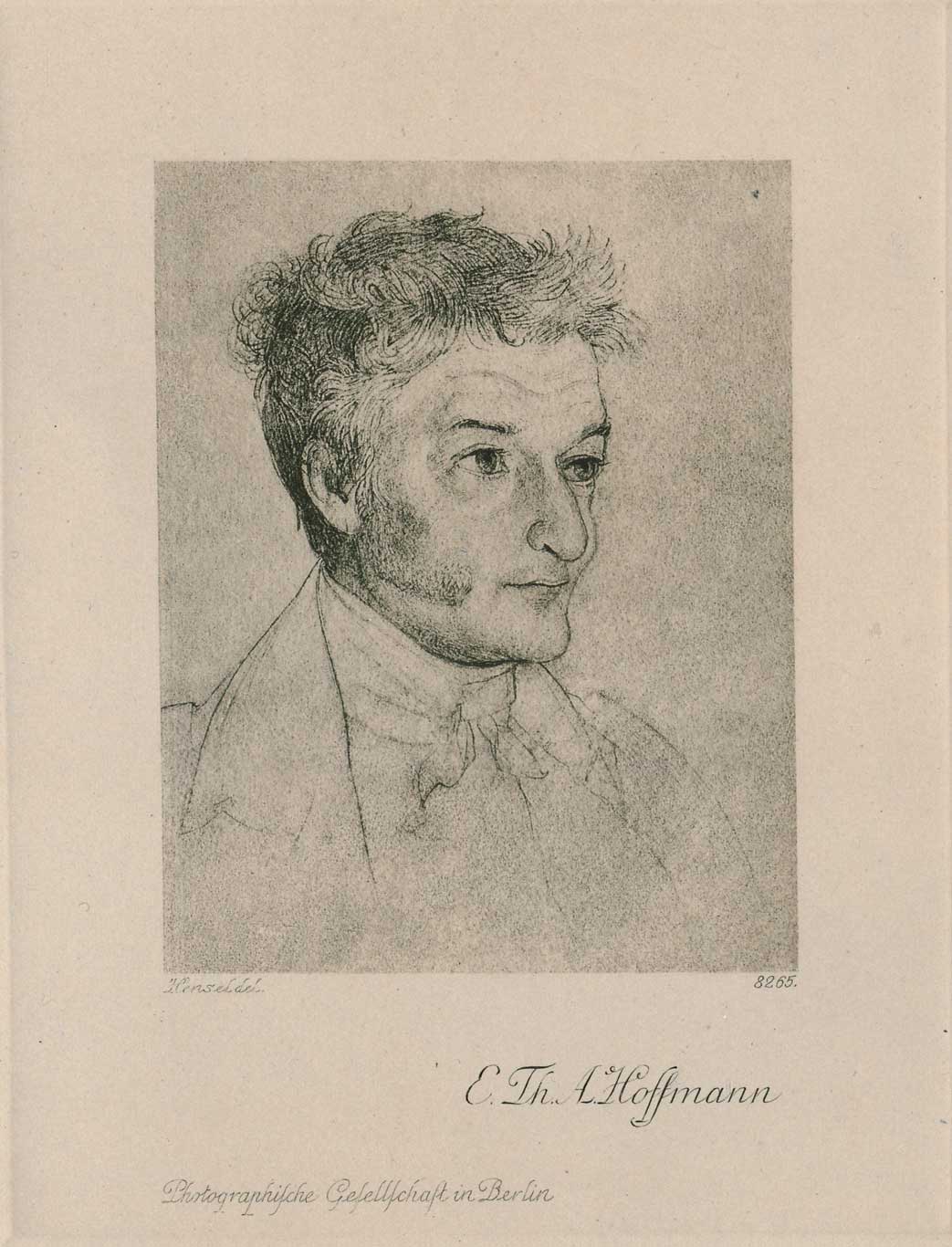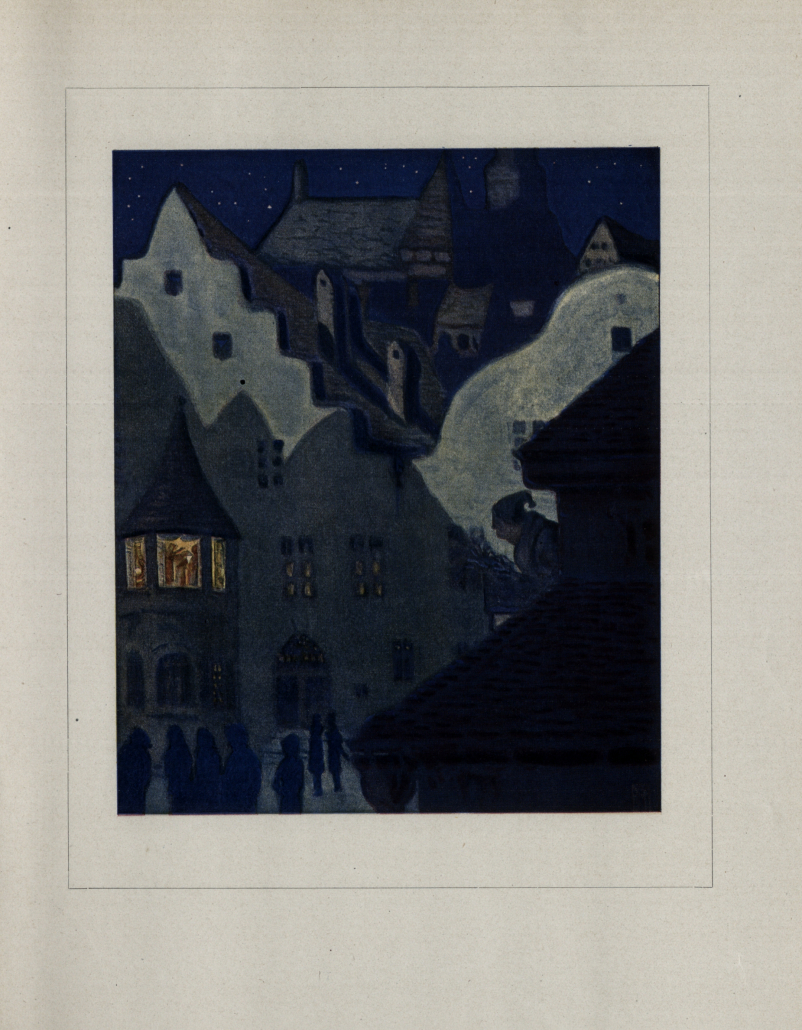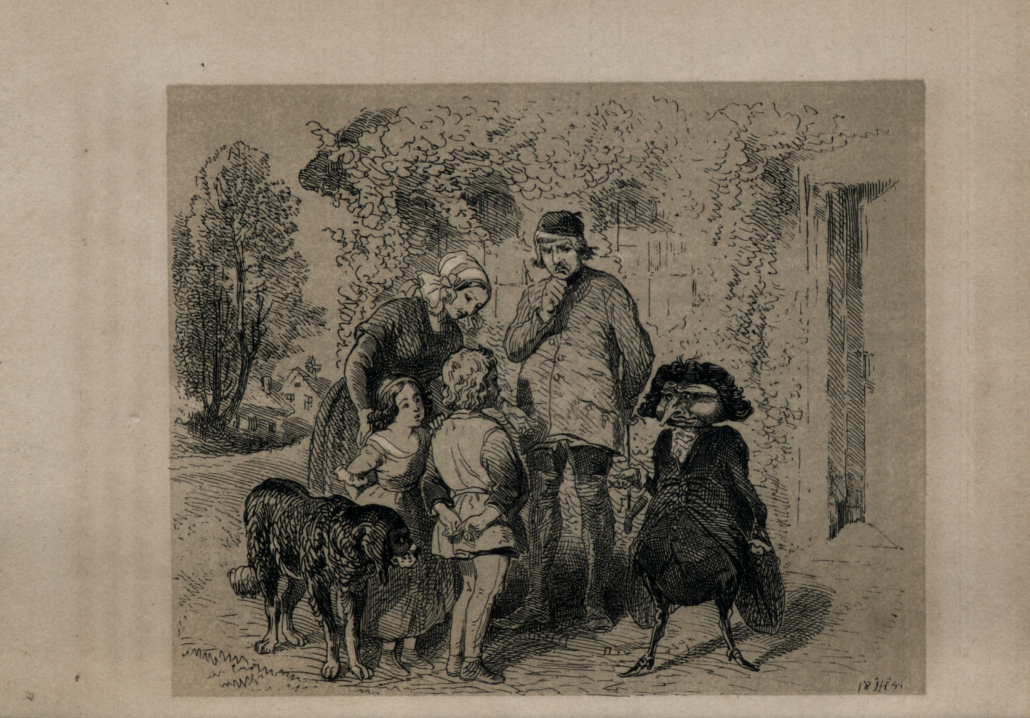23
The E.T.A. Hoffmann collection and website
Incredibly fantastic!
E.T.A. Hoffmann (1776–1822) was one of the most widely read writers of his time – even more: one of the few real bestselling authors who were also recognized abroad. He was a multitalented person, but torn between his vocations. He both excelled and failed as a writer of Gothic horror and fantasy stories, as drawer and ruthless caricaturist, as composer and music critic, as theatre director and Prussian judge. The E.T.A. Hoffmann collection of the Staatsbibliothek zu Berlin is unique in the world, it comprises music autographs, letters, first editions and illustrated books. Since 2015 the collection has been made digitally available via the E.T.A. Hoffmann Portal.
Today, E.T.A. Hoffmann (1776–1822) is known as the most successful author of Romanticism. In fact, he was so much more:
“During the week I am a lawyer and maybe a bit of a musician. On Sundays, I draw during the day and become a rather hilarious author towards evening and late into the night. – Just the final scene… then off to bed – heavens, half past eleven already!”
E.T.A. Hoffmann writing to Theodor Gottlieb von Hippel, 23. January 1796
The Staatsbibliothek zu Berlin has one of the most extensive E.T.A. Hoffmann collections in the world. The initial part of the collection, namely the autograph scores of the late Hoffmann, was donated by his widow Michaelina to the Prussian King Friedrich Wilhelm IV in 1847. Since then, many original manuscripts, letters, first editions, illustrated books, book art, and secondary literature have been added to the collection.
E.T.A. Hoffmann continues to inspire
E.T.A. Hoffmann’s compositions were inspired by literature. Paintings fuelled his writing and music encouraged him to draw. His creative abilities seem never ending. The wave of creativity continues: two centuries later artists, authors, and researchers continue to engage with Hoffmann.
For example, Michael Bensman, like Hoffmann, combines different forms of art with one another: text and art are turned into a three-dimensional mirror object.
Such artistic books and book art play an important part in the E.T.A. Hoffmann-collection in the Staatsbibliothek.
The book art Geschichte vom verlorenen Spiegelbilde by Michael Bensman turns the original object ‘book’ into a dynamic sculpture. The text is reduced to a minimum while black hands reaching for the Spiegelbild symbolise the psychological undertones in Hoffmann’s story.
Michael Bensman: E.T.A. Hoffmann – Die Geschichte vom verlorenen Spiegelbilde, Moscow, Berlin, 2015. SBB-PK © Michael Bensman / Video Anka Bardeleben
Illustrations of Rat Krespel
In addition to artists of the 1910s who dealt with Hoffmann’s person and work intensively, there were also numerous ‘pleasing’ illustrations. In this edition with illustrations by Wilhelm Stumpf, the “most beautiful” tales (meaning the ‘lighter’ ones) of Hoffmann were compiled. The choice of colours and painting techniques, as well as the motifs and representation were also rather restorative and ‘Biedermeier’ style.
E.T.A. Hoffmann’s story Rat Krespel first appeared in the Frauentaschenbuch for the year 1818 and then in 1819 also in the first volume of Hoffmann’s collection of stories Die Serapionsbrüder. The text tells the story of the strange Rat Krespel, who has a wayward relationship with violins: The Rat makes the most impressive violins, only to play them once and then take them apart.
The core of the story, however, is the suffering of Antonie, Rat’s daughter. On the one hand, she is able to sing impressively beautifully due to an organic breast condition, but on the other hand, it is precisely her singing that puts her life in acute danger. Rat Krespel has made it his mission to save Antonie’s life by making her stop singing. He fails in this.
Illustrations of Rat Krespel by Wilhelm Stumpf, from: E.T.A. Hoffmann, Wilhelm Stumpf: Hoffmanns Erzählungen – die schönsten Erzählungen E.T.A. Hoffmanns. München 1919, Staatsbibliothek zu Berlin, 26 ZZ 204. digital copy
Illustration of Das fremde Kind
The Biedermeier illustrations by Theodor Hosemann are among the best-known images of E.T.A. Hoffmann’s work, and they were adopted in numerous later editions. Although Hosemann’s pen-and-ink drawings are true to their time, they manage to sensitively convey the intention of the respective passages in the text in a lively manner.
E.T.A. Hoffmann’s art fairy tale Das fremde Kind first appeared in 1817 in the fairy tale collection Kinder-Mährchen and then in 1819 in the second volume of the story collection Die Serapionsbrüder. In the fairy tale, the two children Christlieb and Felix encounter a mysterious strange child in the forest who plays with them in the wild and is responsible for all kinds of miracles. A conflict arises between the meanwhile arrived fearsome teacher Magister Tinte and the strange child. While the latter embodies free nature, the teacher cannot do anything with it and does not understand it either. In the end, the children’s parents also reject the teacher and the father remembers having known the strange child once.
Illustration of Das fremde Kind by Theodor Hosemann, from: E.T.A. Hoffmann’s Gesammelte Schriften. Berlin 1945, Staatsbibliothek zu Berlin, 26 ZZ 209-1/2. digital copy
E.T.A. Hoffmann portal
Since 2015 all non-copyright material by Hoffmann in the Staatsbibliothek zu Berlin and in other institutions has been made digitally available on the E.T.A. Hoffmann website and can be accessed at etahoffman.net. So far around 2,500 objects have been collected. The website is the first central contact point if you wish to find out more about Hoffmann’s life and works.
The website contains numerous introductory articles on various topics with many illustrations, a search tool with multiple databases, and teaching modules for schools. The interactive biographical timeline and sightseeing tours through Berlin and Bamberg really bring E.T.A. Hoffmann to life.





